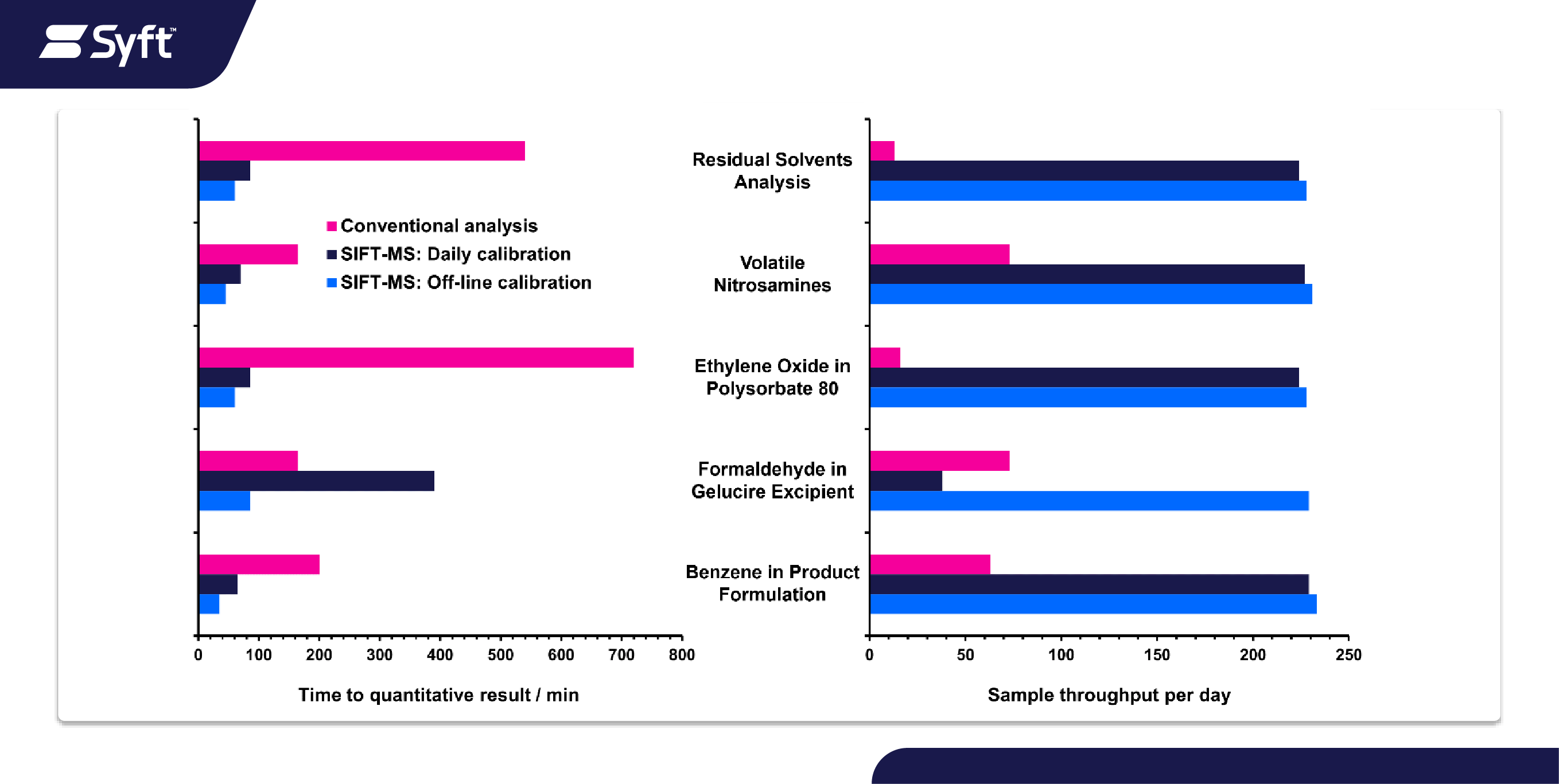
Enhancement of workflows for conventional analysis of volatile impurities is a great challenge due to the relatively long analysis time imposed by chromatographic separation. Additionally, expert operators are required, there is considerable sample preparation time, switching from one method to another requires a configuration change (and hence re-calibration) or separate dedicated instruments, and system maintenance is high.
A further challenge for quantitative volatiles analysis is that it is difficult to generate matrix-matched calibration standards for certain condensed phase samples (e.g., solid-dose forms, polymers, emulsions). Hence conventional testing is frequently conducted indirectly via dissolution followed by headspace analysis (viz. methods such as USP<467> Residual Solvents). Where this is not feasible or reliable, the method of standard additions, or an exhaustive (dynamic headspace analysis, DHA) or integrative (multiple headspace extraction, MHE) approach is used. However, these approaches are costly due to multiple analyses and/or long sample extraction times.
Syft Tracer™, the latest advancement in selected ion flow tube mass spectrometry (SIFT-MS), addresses these challenges in a unique way by simplifying multiple workflows and delivering revolutionary productivity enhancements. These benefits are achieved because Syft TracerTM provides flexible sample analysis from a single configuration together with very stable, reproducible analysis. Combined, these benefits mean that calibrations can be conducted days or weeks in advance of quantitative analysis (Langford and Perkins (2023), Perkins and Langford (2023)), which means that the time to report a quantitative result is significantly reduced compared to conventional approaches (whether it be for solution headspace or MHE).





